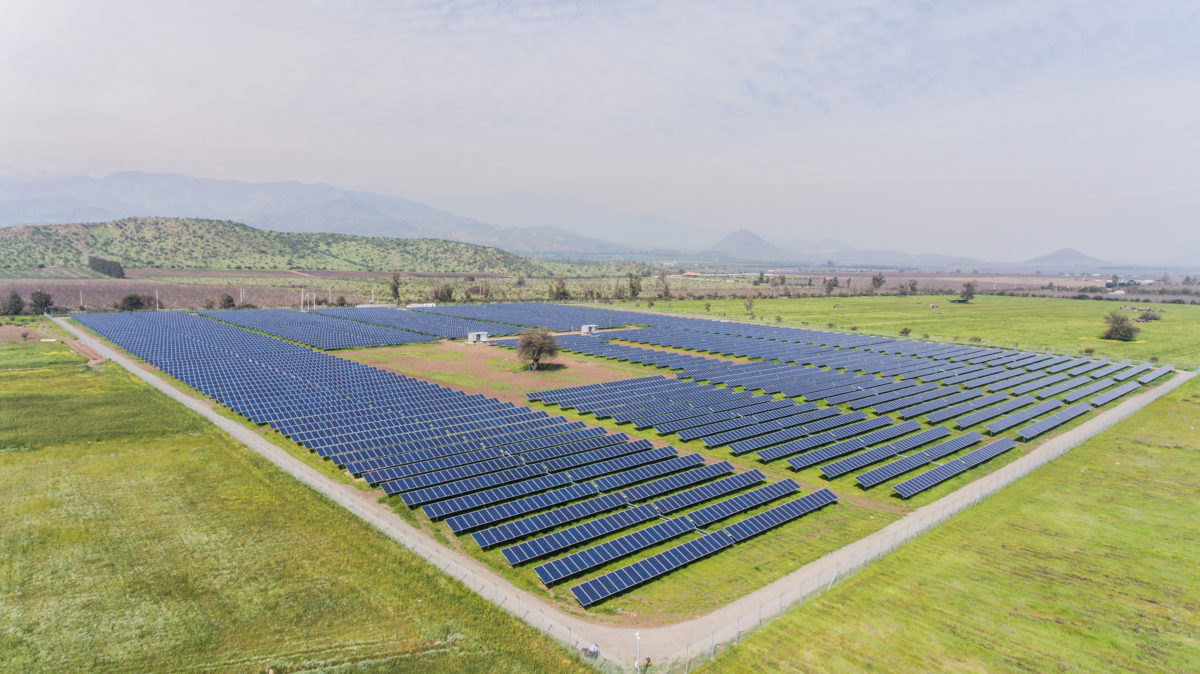Chile’s National Energy Commission (CNE) and the Ministry of Energy have proposed modifications to the remuneration scheme for solar power plants that range in size from 3 MW to 9 MW, and which operate under a program for distributed generation. The authorities want to replace the current ‘stabilized’ price for solar – a hybrid PPA with an element of the wholesale energy price.
The current PMGD (Pequeños Medios de Generación Distribuida) system has secured significant levels of solar development in Chile in recent years despite an absence of auctions for large projects and a net billing scheme for rooftop solar that has largely failed to deliver.
Chilean solar energy association Acesol says the government has proposed replacing the stabilized tariff with prices differentiated according to time bands. The current stabilized price – which is set by the CNE with a complex formula every six months – ensure project owners are granted a fixed profit for the first years of operation. Hourly tariffs, according to Acesol, could mean a reduction in payments to small solar parks during the hours of higher solar radiation.
Discussing other aspects of the government proposals, Acesol’s PMGD delegate Carlos Cabrera Rivas said: “We agree with the regulatory changes that aim to reduce speculation in the process of connecting PMGD projects and we agree to limit and prohibit all types of electrical fragmentation that threaten the spirit of the stabilized price.” But Rivas told pv magazine: “We do not agree with modifying the stabilized price.”
Integration of storage
The Acesol member said it is also necessary to alter regulations so the terms of environmental permitting are compatible with the requirements of connection criteria reports (ICC) issued by power distribution companies to guarantee grid connection priority for PMGD projects. Such a change would help bring projects to a successful conclusion, argued Acesol.
The solar body added, there may also be plans for an expansion of transmission infrastructure for the connection of PMGD projects.
“In addition, we must promote the development and execution of solar projects with storage systems,” Rivas said.
The solar industry group insisted the stabilized price is not a subsidy but a system of bi-directional compensation which rewards project owners in return for the benefits they offer the grid. According to the association, the payment is a cost overrun that will naturally decrease with the convergence between the spot market price for energy and power supply contracts, and is comparable to CO² emission compensation offered by large conventional power plants to renewable energy facilities.
“We are talking about a rate of between 50 and 70 dollars per MWh,” Martin Rocher, general manager of Total Solar in Latin America, told pv magazine in an interview in January 2018.
Popular content
The PMGD program also guarantees automatic connection to the medium voltage grid.
Figures from the PMGD segment
According to data provided by Acesol, the last four years have seen approximately 608 MW of new solar capacity added in Chile thanks to the PMGD program. Of that figure, just over half – around 371 MW, 348 MW of it solar – is linked to the stabilized price payment. The solar association says that payment is essential for obtaining bank finance but does not guarantee the same level of income as a PPA.
Acesol added, PMGD projects have a success rate of only 20% or so and the volume of solar farms that can be developed is constrained by a lack of feeder and distribution substation capacity.
Rodrigo Cordovero, a partner at Micor Consulting, said connection priority is key for PMGD projects in Chile. In an interview with pv magazine last April, Cordovero said the feasibility of such projects hinges on the order of connection priority stated in the ICC document.
Speedy development
“Although there is a nine-month deadline for the connection of the PMGD [project] to the distribution network – from the date of approval of the ICC – this term is often renewable as long as it is justified by the project developer,” said the consultant. However, such projects are often developed and built rapidly. Total Solar’s Rocher said the limited time available is an incentive to speedily carry out such projects.
Solar body Acesol has estimated no more than 1 GW of solar capacity could be installed under the stabilized price mechanism over the next five years, a contribution that would represent 5% of the nation’s installed power capacity.
At the end of last year, Chile had around 2.4 GW of cumulative installed solar generation capacity.
This content is protected by copyright and may not be reused. If you want to cooperate with us and would like to reuse some of our content, please contact: editors@pv-magazine.com.



1 comment
By submitting this form you agree to pv magazine using your data for the purposes of publishing your comment.
Your personal data will only be disclosed or otherwise transmitted to third parties for the purposes of spam filtering or if this is necessary for technical maintenance of the website. Any other transfer to third parties will not take place unless this is justified on the basis of applicable data protection regulations or if pv magazine is legally obliged to do so.
You may revoke this consent at any time with effect for the future, in which case your personal data will be deleted immediately. Otherwise, your data will be deleted if pv magazine has processed your request or the purpose of data storage is fulfilled.
Further information on data privacy can be found in our Data Protection Policy.